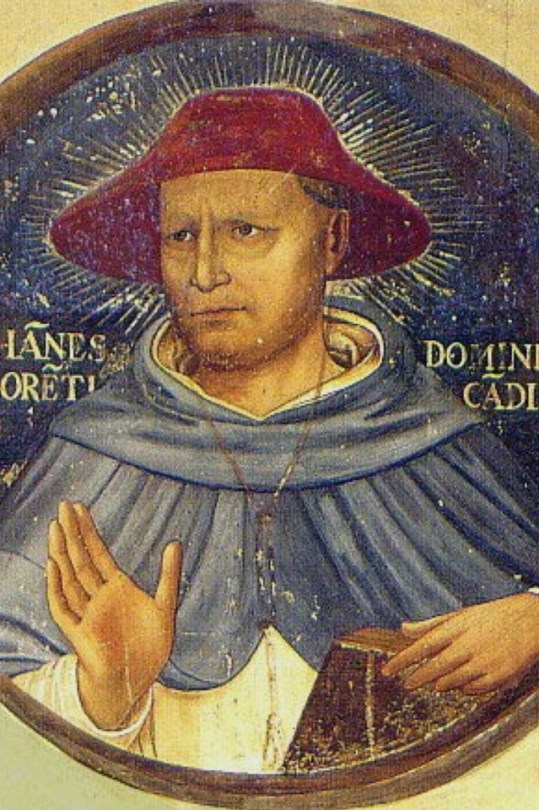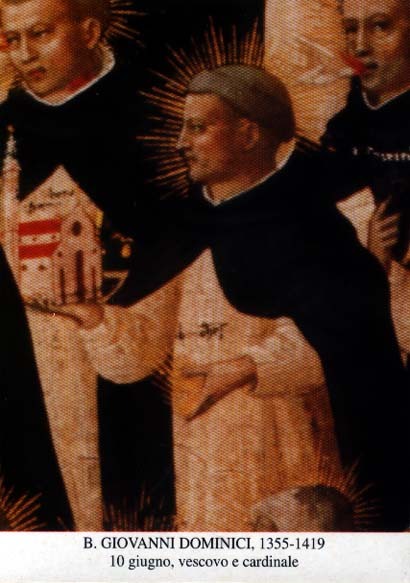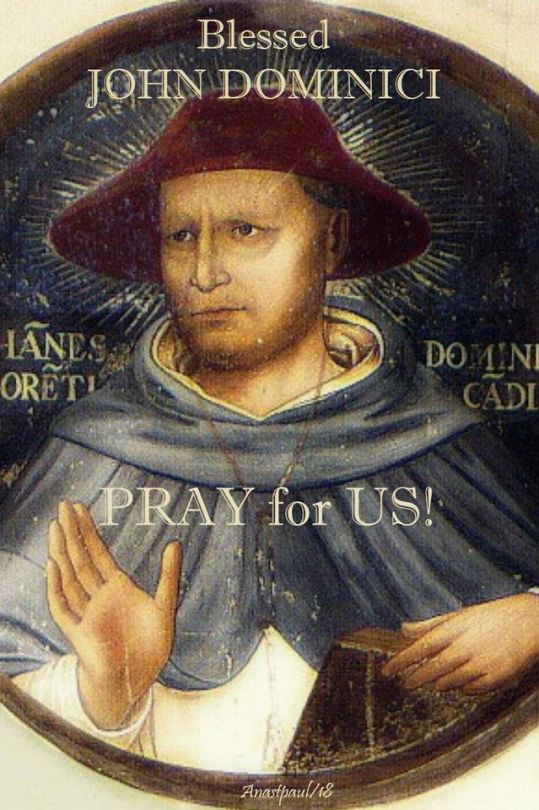#bljohndominici
Text
Within the Corpus Christi Octave, Nossa Senhora da Lapa / Our Lady of the Grotto, Portugal (1498), St Margaret of Scotland and Memorials of the Saints - 10 June
Within the Corpus Christi Octave
Nossa Senhora da Lapa / Our Lady of the Grotto, Sernancelhe, Viseu, Douro, Norte, Portugal (1498) – 10 June:HERE:https://anastpaul.com/2021/06/10/ossa-senhora-da-lapa-our-lady-of-the-grotto-sernancelhe-viseu-douro-norte-portugal-1498-and-memorials-of-the-saints-10-june/
St Margaret of Scotland (1045-1093) Queen consort of Scotland, Wife and Mother, Apostle of…

View On WordPress
#blbogumilusofgniezno#bldianad&039;andalo#blhenryoftreviso#bljohndominici#ourladyofthegrotto#saints10june#stmargaretofscotland
5 notes
·
View notes
Text
Ember Friday, Nossa Senhora da Lapa / Our Lady of the Grotto, Sernancelhe, Viseu, Douro, Norte, Portugal (1498) and Memorials of the Saints - 10 June
Ember Friday, Nossa Senhora da Lapa / Our Lady of the Grotto, Sernancelhe, Viseu, Douro, Norte, Portugal (1498) and Memorials of the Saints – 10 June
Ember Friday, Fast and Abstinence
Nossa Senhora da Lapa / Our Lady of the Grotto, Sernancelhe, Viseu, Douro, Norte, Portugal (1498) – 10 June:HERE:https://anastpaul.com/2021/06/10/ossa-senhora-da-lapa-our-lady-of-the-grotto-sernancelhe-viseu-douro-norte-portugal-1498-and-memorials-of-the-saints-10-june/
St Margaret of Scotland (1045-1093) Queen consort of Scotland, Wife and Mother, Apostle of…

View On WordPress
#blbogumilusofgniezno#blhenryoftreviso#bljohndominici#ourladyofthegrotto#saints10june#stmargaretofscotland
1 note
·
View note
Text
Our Lady of the Grotto, Mellieħa, Malta:
The Sanctuary of Our Lady of Mellieħa is a Marian shrine in the village of Mellieħa in Malta. It was originally constructed in the late 16th century and contains a Byzantine-style fresco, depicting the Blessed Virgin Mary with Christ on her right arm. Tradition has it that the painting was made by St Luke when he was shipwrecked on the island with St Paul. The church expanded several times to accommodate the growing population of the village and the roofed veranda is considered a classic example of 17th century Renaissance architecture. The sanctuary was blessed by St Pope John Paul II during his visit to Malta in May 1990.
This slideshow requires JavaScript.
—
Bl Amata of San Sisto
St Amantius of Tivoli
St Asterius of Petra
St Bardo of Mainz
Bl Bogumilus of Gniezno
St Caerealis of Tivoli
St Censurius of Auxerre
St Crispulus of Rome
Blessed Edward Johannes Maria Poppe (1890-1924)
Biography:
https://anastpaul.com/2017/06/10/saint-of-the-day-10-june-blessed-edward-joannes-maria-poppe/
Bl Elisabeth Hernden
Bl Elizabeth Guillen
St Evermund of Fontenay
St Faustina of Cyzicus
Bl Gerlac of Obermarchtal
St Getulius of Tivoli
Blessed Henry of Treviso (1250-1315)
youtube
St Illadan of Rathlihen
St Ithamar of Rochester
Blessed John Dominici OP (c 1355-1419)
His Life:
https://anastpaul.com/2018/06/10/saint-of-the-day-10-june-blessed-john-dominici-o-p-c-1355-1419/
Bl José Manuel Claramonte Agut
Bl Joseph Kugler
St Landericus of Novalese
St Landericus of Paris
Bl Mary Magdalene of Carpi
St Maurinus of Cologne
St Primitivus of Tivoli
St Restitutus of Rome
Bl Thomas Green
St Timothy of Prusa
Bl Walter Pierson
St Zachary of Nicomedia
—
Martyrs of North Africa – 17 saints: A group of seventeen Christians martyred together in North Africa; the only surviving details are two of their names – Aresius and Rogatius. Both the precise location in North Africa and the date are unknown.
Martyrs of the Aurelian Way – 23 saints: A group of 23 martyrs who died together in the persecutions of Aurelian. The only details that survive are three of their names – Basilides, Mandal and Tripos. c.270-275 on the Aurelian Way, Rome, Italy.
Martyrs of the Hulks of Rochefort/Martyrs of La Rochelle – 64 beati: In 1790 the French Revolutionary authorities passed a law requiring priests to swear allegience to the civil constitution, which would effectively remove them from the authority of and allegience to, Rome. Many refused and in 1791 the government began deporting them to French Guyana. 827 priests and religious were imprisoned on hulks (old ships no longer sea-worthy and used for storage, jails, hospitals, etc.) at Rochefort, France to await exile, most on the Deux-Associés and the Washington which had previously been used to house slaves or prisoners. There they were basically ignored to death as there was little provision for food and water, less for sanitation and none at all for medical help. 542 of the prisoners died there.
The survivors were freed on 12 February 1795 and allowed to return to their homes. Many of them wrote about their time on the hulks and many of them wrote about the faith and ministry of those who had died. 64 of them have been positively identified and confirmed to have died as martyrs, dying for their faith, they are:
• Antoine Auriel• Antoine Bannassat• Augustin-Joseph Desgardin• Barthélemy Jarrige de La Morelie de Biars• Charles-Antoine-Nicolas Ancel• Charles-Arnould Hanus• Charles-René Collas du Bignon• Claude Beguignot
• Claude Dumonet• Claude Laplace• Claude Richard• Claude-BarnabéLaurent de Mascloux• Claude-Joseph Jouffret de Bonnefont• élie Leymarie de Laroche• Florent Dumontet de Cardaillac• François d’Oudinot de la Boissière
• François François• François Hunot• François Mayaudon• Gabriel Pergaud
• Georges-Edme René• Gervais-Protais Brunel• Jacques Gagnot• Jacques Lombardie• Jacques Retouret• Jacques-Morelle Dupas• Jean Baptiste Guillaume• Jean Bourdon• Jean Hunot• Jean Mopinot• Jean-Baptiste de Bruxelles• Jean-Baptiste Duverneuil• Jean-Baptiste Laborie du Vivier
• Jean-Baptiste Menestrel• Jean-Baptiste Souzy• Jean-Baptiste-Ignace-Pierre Vernoy de Montjournal• Jean-Baptiste-Xavier Loir• Jean-François Jarrige de la Morelie de Breuil• Jean-Georges Rehm• Jean-Nicolas Cordier
• Joseph Imbert• Joseph Juge de Saint-Martin• Joseph Marchandon
• Lazare Tiersot• Louis-Armand-Joseph Adam• Louis-François Lebrun
• Louis-Wulphy Huppy• Marcel-Gaucher Labiche de Reignefort• Michel-Bernard Marchand• Michel-Louis Brulard• Nicolas Savouret• Nicolas Tabouillot• Noël-Hilaire Le Conte• Paul-Jean Charles• Philippe Papon• Pierre Gabilhaud• Pierre Jarrige de la Morelie de Puyredon• Pierre-Joseph le roing de la Romagère• Pierre-Michel Noël• Pierre-Sulpice-Christophe Faverge• Pierre-Yrieix Labrouhe de Laborderie• Raymond Petiniaud de Jourgnac• Scipion-Jérôme Brigeat Lambert• Sébastien-Loup Hunot.
They died between 19 May 1794 and 23 February 1795 aboard prison ships docked at Rochefort, Charente-Maritime, France and were beatified on
1 October 1995 by St Pope John Paul II.
Feast of Our Lady of the Grotto, Mellieħa, Malta and Memorials of the Saints – 10 June Our Lady of the Grotto, Mellieħa, Malta: The Sanctuary of Our Lady of Mellieħa is a Marian shrine in the village of Mellieħa in Malta.
5 notes
·
View notes
Photo

Saint of the Day – 10 June – Blessed John Dominici O.P. (c 1355-1419) ArchBishop, Cardinal, Religious Friar, Theologian, Preacher, Confessor, Reformer, Papal Legate, Papal Counsellor and Confessor, Writer, Evangeliser – born on 1356 at Florence, Italy and died on 10 June 1419 of a fever at Buda, Hungary.
Although John had little education and suffered from a speech impediment that caused him to stammer and stutter, he possessed a tremendous drive to improve himself, overcome his obstacles and serve our Lord. He also had a great memory and later in life became a great theologian and preacher. John Dominic met St Catherine of Siena when he was young, entered the Order of Preachers and was an integral part of a major reform movement. This reform helped to revitalise the Order after its decimation by the plague and general laxity of observance. Not only was he a major force in the Dominican Order but he became a cardinal in the Church and an official legate for the Pope. Most importantly, he worked to resolve the Great Western Schism. He also brought Fra Angelico, the world famous painter and St Antoninus, a brilliant theologian and reformer, into the Order.
Born in c 1355 at Florence, Italy, John spent a great deal of his youth in or around the Dominican church of Santa Maria Novella. He joined the Order at the age of 17, despite his lack of education and his speech impediment, even while the Dominicans are scholars and preachers. After entering the Order, Blessed John studied in Pisa and Florence and received a degree from the University of Paris. As a priest, Blessed John once believed that his speech impediment would threaten his vocation but it was cured through the intervention of Saint Catherine of Siena. Blessed John spent 12 years in Venice as a preacher.
In 1392, Blessed John found himself to be the Vicar provincial serving in Rome. At the time, Blessed Raymond of Capua was the Master General of the Order and he helped rebuild the Order after the ravages of the Plague and helped return regular discipline to the Order’s members.
Blessed John founded Dominican convents in Venice, Fiesole, Chioggia, Citta de Castello, Cortona, Lucca and Fabriano and was a correspondent of Blessed Clara Gambacorta, advising her of how to restore discipline to Dominican nuns of the day. For a time, he lost papal support because of support for the Dominican White Penitents in Venice but was later welcomed back and resumed his work in the Order.
Most importantly, Blessed John worked to provide a Christian education to young people. He opposed pagan ideas that were taking hold in the humanism of his day and was a confessor and adviser to Pope Gregory XII. He was made Cardinal of San Sisto in 1407 and Archbishop of Ragusa in 1408. In these roles, he helped to heal the Western Schism and convinced Pope Gregory XII to call the Council of Constance and to abdicate the papacy causing the anti-popes to also drop their claims to the papal throne.

He was appointed the Papal legate to Milan, Genoa, Hungary and Bohemia for Pope Martin V and, in that role, worked to settle the disputes caused by the death of Jon Hus and to heal the Hussite Schism. However, while Blessed John was able to convert some, he was unable to resolve the Hussite Schism.
John is widely known for his scripture commentaries and hymns. His portrait was painted by Fra Angelico and a his memoir was written by St Antonius of Florence, who joined the Order after hearing Blessed John preach.
Blessed John died on 10 June 1419 at Buda, Hungary, from a fever and he was buried in the Saint Paul the Hermit church there. His tomb became a site of miracles and his remains were venerated and miracles reported, until the destruction of the church during a Turkish invasion. His cultus was confirmed in 1832 and he was beatified by Pope Gregory XVI in 1837.
(via Saint of the Day - 10 June - Blessed John Dominici O.P. (c 1355-1419))
18 notes
·
View notes
Photo

Thought for the Day – 10 June -Tenth Sunday of the Year B and the Memorial of Bl John Dominici O.P. (c 1355-1419)
Why should we worry what future generations think of us? That seems pretty insecure, to worry about what others who don’t even exist yet think. It seems much better to worry about whether or not we are doing the right thing. That’s not easy in our culture, because there is not widespread agreement on precisely what that right thing is.
Most of us will fade into the past without much comment by future generations. That shouldn’t frighten us; it should motivate us. Doing the right thing for people of faith–acting according to the demands of our human nature and according to the commands of God–should be the primary motivation: not some imagined stamp of approval down the road but the approval of our loving Maker. For people who don’t believe in God or an afterlife, it is even more critical to do what is right because it doesn’t seem like being on the right side of history matters much if you’re not going to exist.
Historical hindsight can be 20/20 but too often our rearview mirror gives a picture that is not so clear. Bl John Dominic knew not to worry about the vicissitudes of human chroniclers, agonising about his place in the historical annals. Instead, he acted according to his well-formed conscience and the promptings of the Holy Spirit. That is why he is a great saint. He was a world-famous celebrity, now mostly forgotten, except by the One who truly matters. (Br Dominic Bouck)
Blessed John Dominici, Pray for us!
(via Thought for the Day - 10 June -Tenth Sunday of the Year B and the Memorial of Bl John Dominici O.P. (c 1355-1419))
13 notes
·
View notes